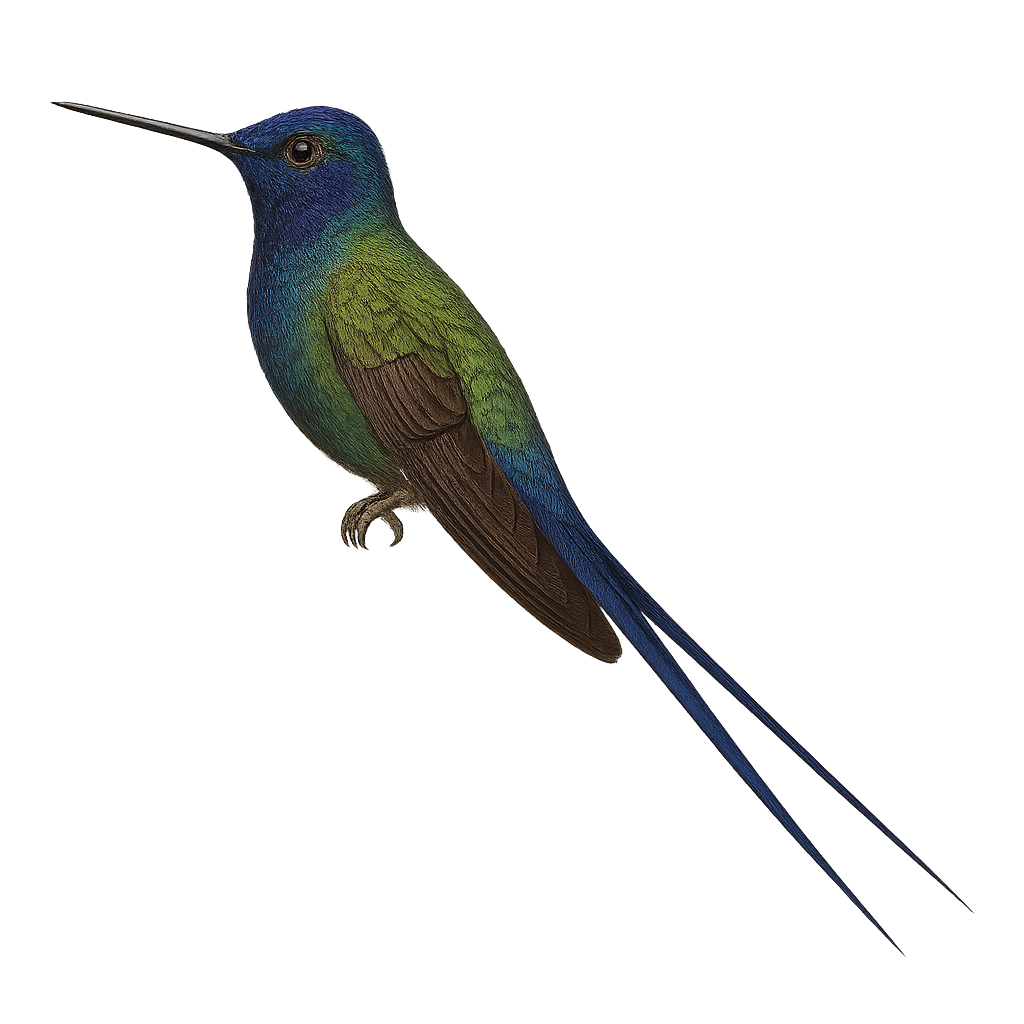Your wildlife photography guide.
Explore the scissor-tailed hummingbird in detail, study its behavior, prepare your shots.
Where to observe and photograph the scissor-tailed hummingbird in the wild
Learn where and when to spot the scissor-tailed hummingbird in the wild, how to identify the species based on distinctive features, and what natural environments it inhabits. The WildlifePhotographer app offers tailored photography tips that reflect the scissor-tailed hummingbird’s behavior, helping you capture better wildlife images. Explore the full species profile for key information including description, habitat, active periods, and approach techniques.
Scissor-tailed Hummingbird
Scientific name: Hylonympha macrocerca

IUCN Status: Vulnerable
Family: TROCHILIDAE
Group: Birds
Sensitivity to human approach: Suspicious
Minimum approach distance: 5 m
Courtship display: April to June
Incubation: 19-21 jours
Hatchings: April to July
Habitat:
Humid forests, mountainous areas
Activity period :
Primarily active during the day, with peak activity in the morning and late afternoon.
Identification and description:
The Scissor-tailed Hummingbird, or Hylonympha macrocerca, is a hummingbird species endemic to Venezuela, specifically the Sierra de San Luis region. This small bird is recognizable by its long, scimitar-shaped tail, giving it an elegant and unique appearance. Its plumage is primarily emerald green with metallic sheens, while its throat displays a striking violet hue. Males and females exhibit notable differences, particularly in tail length, which is more pronounced in males. This hummingbird primarily inhabits humid forests and mountainous areas, where it feeds mainly on nectar, but also on small insects. Unfortunately, this species is considered vulnerable due to deforestation and the loss of its natural habitat.
Recommended lens:
400 mm – adjust based on distance, desired framing (portrait or habitat), and approach conditions.
Photography tips:
To photograph the Scissor-tailed Hummingbird, it is advisable to use a 400mm lens or greater to capture precise details without disturbing the bird. Favor morning hours when the light is soft and hummingbird activity is at its peak. Be patient and discreet, positioning yourself near the flowers they frequent for feeding. Use a tripod to stabilize your camera and achieve sharp images. Remember to respect the 5-meter safety distance to avoid stressing the bird and preserve its natural habitat.
The WildlifePhotographer App is coming soon!
Be the first to explore the best nature spots, track rutting seasons, log your observations, and observe more wildlife.
Already 1 431 wildlife lovers subscribed worldwide

